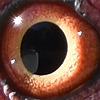HOME | DD
 TheBootesArtVoid — Gossip Among Pigeons
TheBootesArtVoid — Gossip Among Pigeons

#animal #animalphotography #animals #bird #birds #dove #doves #natural #nature #naturephotography #photo #photography #photographyanimals #photographynature #photographyphoto #photos #pigeon #pigeons #birdphotography #pigeonphotography #thebootesartvoid
Published: 2022-08-23 08:59:52 +0000 UTC; Views: 2257; Favourites: 65; Downloads: 0
Redirect to original
Description
Species Name: Rock Dove
Species Latin Name: Columba livia
Also Known As: Rock Pigeon, Common Pigeon
Native To: Europe, Africa, and Asia
Conservation Status: Least Concern
Photo Taken At: N/A
Size (length): 29-37cm (11.4 – 14.6 inches)
Weight: 238-380g (8.4 – 13.4 oz)
Wingspan: 62-72cm (24.4 – 28.4 inches)
Lifespan: 6-35 years
Top Speed: 100kmh (62.1mph)
Population Size: 260 millions
Population Trend: Decreasing
Group Name: Dole, Dule, Flight
Female Name: Hen
Male Name: Cock
Baby Name: Squab, Squeaker, Chicks
Mating Behavior: Monogamous
Reproduction Season: Year-round
Egg's Laid: 2 Eggs
Incubation Period: 16-19 days
Independent Age: 4 Weeks
Sub Species:
The European Rock Dove (Columba livia Livia); Located in western and southern Europe, northern Africa, and Asia to western Kazakhstan, the northern Caucasus, Georgia, Cyprus, Turkey, Iran, and Iraq.
Indian Rock Dove (Columba livia Intermedia); Located in Sri Lanka and in India south of the Himalayan range.
Egyptian Rock Dove (Columba livia Schimperi); Located in Nile Delta south to northern Sudan.
Senegal Rock Dove (Columba livia Gymnocyclus); Located in Senegal and Guinea to Ghana, Benin and Nigeria.
Hume's Rock Dove (Columba livia Neglecta); Located in the mountains of Central Asia.
Iranian Rock Dove (Columba livia Gaddi); Located in Azerbaijan and Iran east to Uzbekistan.
Mongolian Rock Dove (Columba livia Nigricans); Located in Mongolia and northern China.
Arabian Rock Dove (Columba livia Palaestinae); Located in Syria to Sinai and Arabia.
Canary Islands Rock Dove (Columba livia Canariensis); Located in the Canary Islands.
Saharan Rock Dove (Columba livia Targia); Located in the mountains the Sahara east to Sudan.
Oasis Rock Dove (Columba livia Dakhlae); Located only in two oases in central Egypt.
Cape Verde Rock Dove (Columba livia Atlantis); Located in Madeira, the Azores and Cape Verde.
Description:
As the Rock Doves have been subject to domestication for several thousands of years the is a great deal of variation in appearance for this bird. It is believed that the Rock Doves we see around us today are descended from domesticated breeds that have escaped captivity throughout history and have become feral. It is believed that the original wild Rock Dove that the current day species originated from may already be extinct due to interbreeding with the formally domesticated sub species.
Generally speaking these birds will have a dark bluish-grey head, neck, and chest with glossy yellowish, greenish, and reddish-purple iridescence along its neck and wing feathers. They can have an orange, red, or golden with a paler inner ring. The bare skin around their eyes is a bluish-grey. The bill is grey-black with a conspicuous off-white cere. There feet are purplish-red. Both the males and female look near identical to each other, the females will have less intensity of iridescence along their neck. Juveniles generally will have a duller colouration to their bodies. As mentioned before there is a lot of variation between different sub species of these birds.
Diet:
These birds are omnivores but will have a general preference for plant matter such as fruits and grains. They are able to eat grass seeds and berries from gardens during spring time but ill often times be seen in urban areas feeding on scraps left by people. These birds can also eat various insects and spiders.
Behaviour:
These birds have a variety of different calls, generally their main calls can be described as a soft, slightly wavering coo. Their display calls can be described as a 'whoo, hoo-witoo-hoo' or a 'coo, roo-c'too-coo'. During these display calls these birds will inflate their throat, and fan their tail feathers as they strut and bow their heads. Rock Doves will also make a nest call which is described as 'hu-hu-hurr'. Their alarm calls can vary but will generally be described as a grunt-like 'oorhh'.
Non verbal communication is also used by these birds which can be feet stomping, hissing, and beak snapping. Juveniles are more likely to use beak snapping as a means to drive away any nest invaders. Foot stamping appears to be a deliberate action by these birds although it is unclear as to why.
These birds can often be seen in pairs when they are in the breeding season otherwise they are rather social birds that will tend to gather and flying flocks. They generally feed early in the morning and during the mid afternoon either individually, in pairs or in flocks. During the day they may seek shelter under cover during rather hot days, they will also seek shelter under cover during the night. The flocks will generally consist of 'producers' who actively seek food in new areas or 'scroungers' who will instead join a flock that has already located food. These birds will drink water by dipping their entire beaks into the water before to use it as a straw.
Rock doves are monogamous and will form mating pairs for life. Generally mating will occur all year round and both parents will work towards caring for the young. The male will provide the materials which is generally made of straw and sticks, the female will use the materials to construct flimsy platform laid on a ledge under cover. Nest locations in urban areas generally include window ledges of buildings. Other nest locations can include coastal cliff faces, caves, and canyons where there is a ledge and cover for the nest. Nests can be re-used by the same couple as they add more material with each brood of eggs they will lay, up to 5 broods can be laid in a single year with 2 eggs laid per brood. The eggs are incubated by both parents for 16-19 days, once hatched both parents will feed their young 'pigeon milk' which is a protein rich and fatty liquid the parents produce in their crops. The chicks reach independence at 4 weeks of age.
Further Reading (general information):
Wikipedia: en.wikipedia.org/wiki/Rock_dov…
Birdlife: www.birdlife.org.au/bird-profi…
Birds in Backyards: www.birdsinbackyards.net/speci…
Kidadl: kidadl.com/animal-facts/rock-d…
Animalia: animalia.bio/rock-dove
Australian Museum: australian.museum/learn/animal…
Related content
Comments: 8

👍: 1 ⏩: 1

👍: 0 ⏩: 1

👍: 1 ⏩: 0

👍: 1 ⏩: 1

👍: 1 ⏩: 0

👍: 1 ⏩: 1

👍: 0 ⏩: 1

👍: 1 ⏩: 0


























